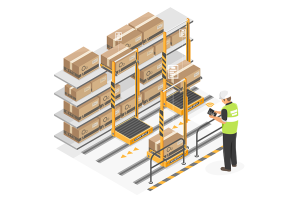 Not long ago, corporate leaders thought that the greatest opportunity to leave the competition behind was to invest heavily in internal R&D and to perform all innovation activities behind closed doors until new products were mature enough and ready to be launched to market. It was believed that only those companies would be able to keep up with the pace of change and innovation.
Not long ago, corporate leaders thought that the greatest opportunity to leave the competition behind was to invest heavily in internal R&D and to perform all innovation activities behind closed doors until new products were mature enough and ready to be launched to market. It was believed that only those companies would be able to keep up with the pace of change and innovation.
Today, the situation is quite different. Companies have moved from inward-focused, ‘closed’ innovation to ‘open’ innovation, where valuable ideas can come from both inside as well as outside a company, encouraging the use and exchange of external ideas, technologies, knowledge, talent and resources. In part, this can be achieved through the organisation of co-creation events that are often referred to as ‘hackathons’.
Matthias Gutzmann, Founder of Digital Procurement World, tells SmartProcurement more.
What is a hackathon?
Let’s get one thing straight. You don’t have to be a hacker to participate in a hackathon. These events have nothing to do with that dubious practice or any illegal activities. Instead, they bring together technical professionals, split them into teams and pitch these teams against one another for one or two intense days. The main goal is to create something new or to solve a tricky problem in a unique and inventive way. The solution could be an app, a robot or a new business model. The sky is the limit!
A hackathon is an event with an element of competition, where participants work in teams over a set and short period of time to ideate, collaborate, design, rapidly prototype, test, iterate and pitch their solutions to a determined challenge. Hackathons are time-limited events and best fit the earliest stages of the lean innovation process, where the market is still unknown or not yet well-defined, and many ideas are welcome to be tested.
Once the domain of start-up culture, hackathons are a fun way to push boundaries and think laterally. Mark Zuckerberg famously gave hacking challenges when hiring people at Facebook. For large organisations in particular, hackathons are adapted to greatly accelerate the process of digital transformation. They are less about designing new products and more about ‘hacking’ away at old processes and ways of working to find and recruit digital tech talent.
Hackathon: design thinking in action
Corporate hackathons, usually, follow a design thinking methodology to guide teams through the day(s). Design thinking works extremely well in a business hackathon setting, because it starts by deep-diving into the problem (challenge) through user interviews, observation and research. This provides strong foundations, rooted in real, human needs, to build ideas and prototypes on.
Design thinking refers to creative strategies that designers use to solve complex problems in a collaborative manner. The design thinking process is structured into five phases: empathise, define, ideate, prototype and test.
A design thinking process proposed for a two-day hackathon event could look something like this:

Empathise: participants conduct preliminary research on the topic and engage with end-users and other stakeholders via interviews.
Define: teams try to make sense of what they have just learnt through the interviews and research by defining the problem that they are going to address. While the hackathon provides the challenge, the underlying problem is identified through the analysis of data collected during the empathise phase.
Ideate: teams start brainstorming about potential ideas that could solve the problem and continue by ranking their ideas. This phase is not so much about the quality, but rather about the quantity of ideas. This is where teams should explore anything from conventional to entirely blue-sky options.
Prototype: what follows is a series of iterations, where teams start by developing a prototype for the selected idea, before testing it with stakeholders to apply final modifications.
Pitch: the presentation of the final prototype to the judges and selection of the hackathon winner.
ProcureHack, a hackathon taking place at #DPW2019 in Amsterdam (18-19 September 2019), will be a great opportunity to see procurement design thinking at work in person and in real time. It will be valuable to see teams start from essentially a zero base, armed with only an idea, to solve a real-world procurement challenge and demonstrate a working prototype in only 24 hours. For more information about ProcureHack and how to get involved, visit www.digitalprocurementworld.com/hackathon.


























